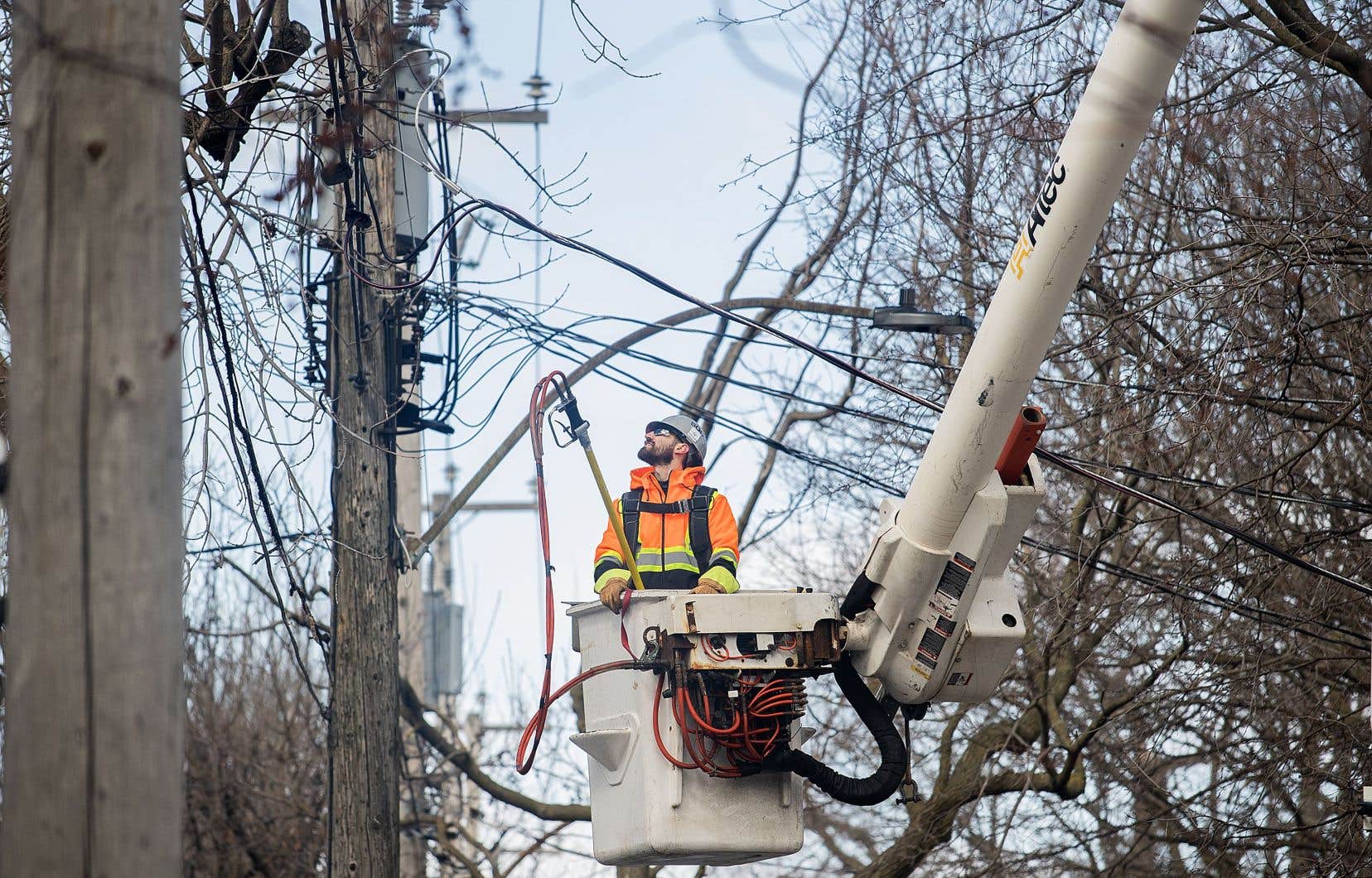In Quebec, only a small proportion of electrical wires are buried, despite the harsh winters the province faces year after year. New residential developments are increasingly relying on underground cables, however, while better urban planning could help end the reign of utility poles in dense environments, experts say.
Each time the vagaries of the weather cause branches to fall on Hydro-Québec’s power lines, causing major power outages in several regions, the debate on the relevance of burying power lines in the province is restarted. The ice storm that plunged more than a million Quebecers into darkness on Wednesday evening was no exception. Prime Minister François Legault had also prepared for it.
“Burying all the wires of Hydro-Quebec, we’re talking about 100 billion. You have to be realistic, ”he said at a press briefing on Thursday, thus rejecting this option deemed too expensive by the government.
However, “nobody says that it should be all the wires in Quebec” which should be buried, retorts the scientific director of the Institute of Energy Trottier at Polytechnique Montreal, Normand Mousseau. The latter estimates that the percentage of buried electrical wires could gradually increase in the province without entailing exorbitant expenses, if everything is well planned for the public authorities.
“We’ve been refusing to do it for decades. We are opening the streets in Montreal to redo the aqueducts, the sewer circuits, ”but we keep the electric poles in these places, notes the expert. However, “when you open the street, put the wires in the basement, it does not entail major costs”. “It takes coordination between Hydro-Québec and the cities, that they work together” so that the development of these territories is carried out with a view to burying more and more electric wires in the province, insists Mr. Foam.
Currently, 10 to 15% of Hydro-Québec’s entire distribution network is buried, a much lower rate than in several European countries, such as Germany and Belgium, where the vast majority of electrical wires are located in the basement.
On the island of Montreal, approximately 50% of the electrical wires – totaling 4,000 kilometers – are buried, but the situation varies greatly from one area of the city to another. In the linked city of Westmount, which has been largely spared the power outages that have hit the metropolis since Wednesday evening, this rate of burying wires reaches around 70%.
Fewer breakdowns
Developers are also increasingly opting for burying electrical wires in their real estate developments, thus avoiding the addition of electrical poles that disfigure the urban landscape, notes the professor of engineering at Concordia University and specialist in the field. energy, Andreas Athienitis.
The Association of Construction and Housing Professionals of Quebec is also in favor of burying electrical wires in new real estate developments. Its communications manager, Émilie Hermitte, warns, however, that if the promoters are not supported in this sense by Quebec, “the financial burden will be passed on to the buyers”.
Burying electrical wires also makes it possible to reduce the risk of power outages when 40% of them are caused by “vegetation”, in particular the fall of branches or trees on wires, according to Hydro-Quebec. “You have to think about where you plant the trees,” observes Mr. Athienitis, who believes that this aspect should also be taken into account in an effort to better plan the development of cities in the province.
To reduce outages caused by vegetation, Hydro-Québec has increased its investments dedicated to controlling it, in particular due to pruning work on trees near power poles. However, in dense urban environments, “the coexistence of heavily loaded overhead lines” is often “incompatible” with the measures taken by cities to increase urban forestry on their territory. A situation that increases the risk of breakdowns when bad weather occurs, notes the spokesperson for the Union of Quebec Municipalities (UMQ), Patrick Lemieux.
The UMQ thus made representations for 10 years before the Régie de l’énergie in order to encourage it to favor the burial of electric wires rather than overhead lines, but this request remained a dead letter. The organization had also proposed that the bill for this transition be assumed by all Hydro-Québec customers, through rate increases, rather than falling on the municipalities.
“We intervened for several years, but the choices made by the Régie were that the costs for consumers remain as low as possible, so we never went ahead with this proposal,” notes Mr. Lemieux. Thus, when an ice or snow storm occurs, “our air network is more at risk and we have seen it again this week in a blatant way”, he says. “It’s a societal choice. »
Joined by The duty, Hydro-Québec’s media relations team leader, Maxence Huard-Lefebvre, noted that an underground electrical network is not entirely immune to outages, which can, for example, be caused by water infiltration. The lifespan of electric wires is also shorter when they are underground and a longer period of time is necessary to repair them when breakage occurs, notes the spokesperson.
Landfilling can only be economically viable in dense environments, where housing is close to each other, he added.
